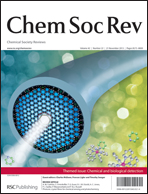Biological detection by optical oxygen sensing
Abstract
Recent developments in the area of biological detection by optical sensing of molecular oxygen (O2) are reviewed, with particular emphasis on the quenched-phosphorescence O2 sensing technique. Following a brief introduction to the main principles, materials and formats of sensor technology, the main groups of applications targeted to biological detection using an O2 transducer are described. These groups include: enzymatic assays; analysis of respiration of mammalian and microbial cells, small organisms and plants;

- This article is part of the themed collection: Chemical and biological detection

 Please wait while we load your content...
Please wait while we load your content...